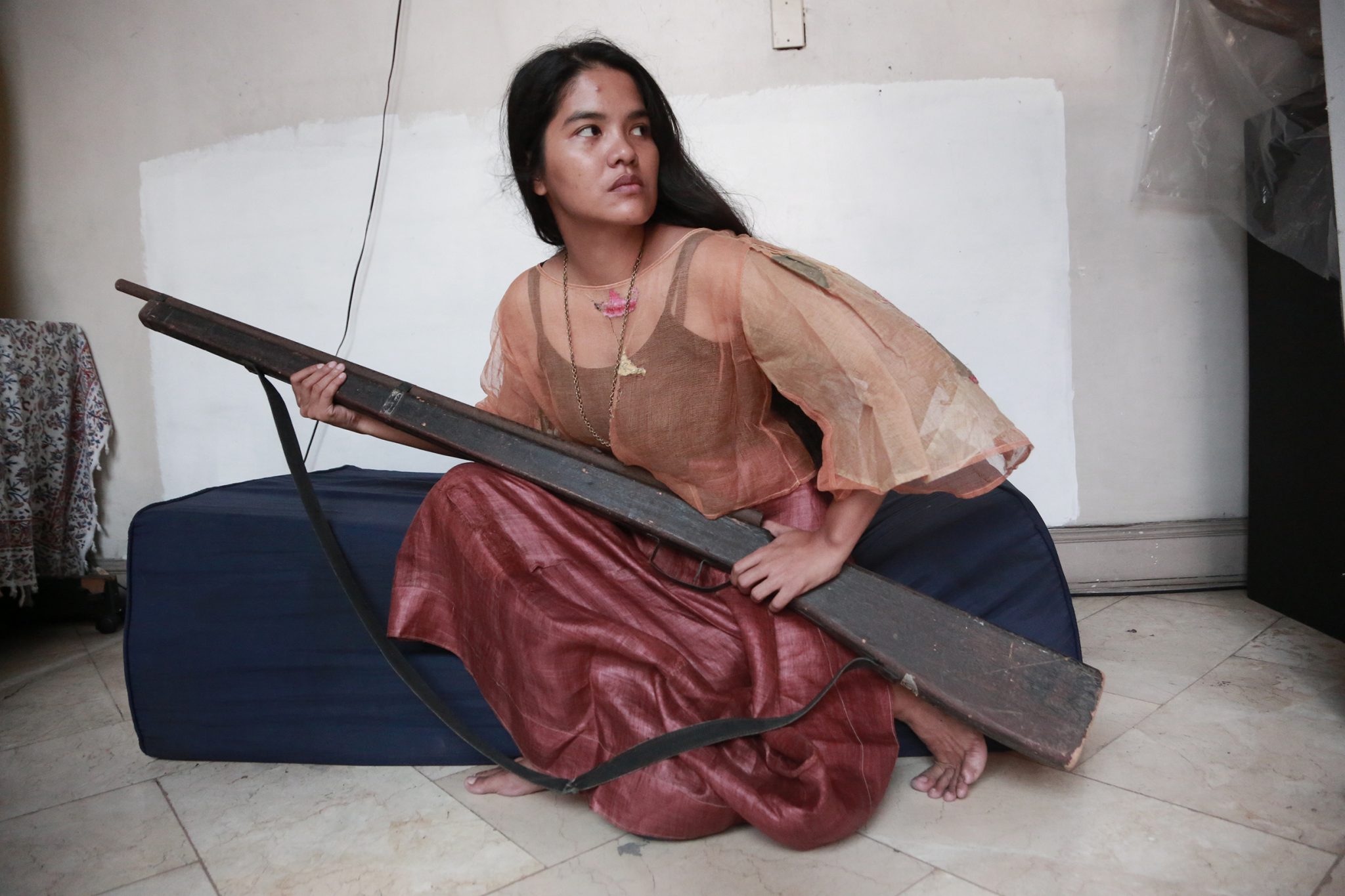A tribute to the Filipino communist rebel who understood the revolutionary power of artistic expression
Rodrigo Duterte’s tenure as president of the Philippines is finally coming to an end, and on 9 May the country will elect a new leader. (Many on the left hope it will be the current vice president, Leni Robredo.) Duterte’s term has infamously facilitated the extrajudicial killings of almost 30,000 individuals, according to Rappler, whose founder and CEO, Maria Ressa, is among Duterte’s staunchest critics and the first Filipino recipient of the Nobel Peace Prize. (Duterte has admitted to killing at least three men personally.)
While the Philippine artistic community has mourned these casualties and continuously called for justice, the death of revolutionary poet Kerima Lorena Tariman, on 20 August 2021, stunned it. Tariman perished following an armed altercation with the 79th Infantry Battalion at the Hacienda Raymunda in Silay City, Negros, alongside her comrade Joery Dato-on Cocuba. Tariman was both a respected writer and leading cadre of the Bagong Hukbong Bayan (New People’s Army, or NPA), the (state-designated terrorist) military wing of the Partido Komunista ng Pilipinas (Communist Party of the Philippines, or CPP). The Philippine state describes Tariman as a ‘notorious terrorist’, but sympathetic others on the left have dedicated numerous artworks, murals and discussions to the martyred writer.
Tariman was an accomplished revolutionary poet whose last anthology, Pag-aaral sa Oras: Mga Lumang Tula Tenggol sa Bago (Reflections on Time: Old Poems About the New), was lauded by CNN Philippines as one of the top books of 2017. In her foreword she writes of how many of these poems are decades old, ‘pero sa kabilang banda, bago pa rin’ (but on the other hand, new still) – reflecting on the stasis and retrenchment of the present sociopolitical crisis that has made verse from the 1990s and 2000s endure into the present.
Tariman maintained a communist critical praxis against imperial, feudal and bureaucratic-capitalist forces that have sustained inequality within the country. She wrote consistently in Philippine dialects – Tagalog, Ilocano, Visayan and more – in an anti-imperial act recognising the effect of the English language on the country’s psyche. Indeed, local dialects are generally the preferred mode of communication for most Filipinos despite English and Filipino holding joint status as the official languages of the Philippines. The prominence of English is a trace of America’s imperial control from 1898 until 1946, and its enduring reach. Tariman writes in deep, formal Filipino, embracing the repetitious cadence of syllables and rhymes. The English translations of Tariman’s poetry presented here are my own: literal and unofficial.
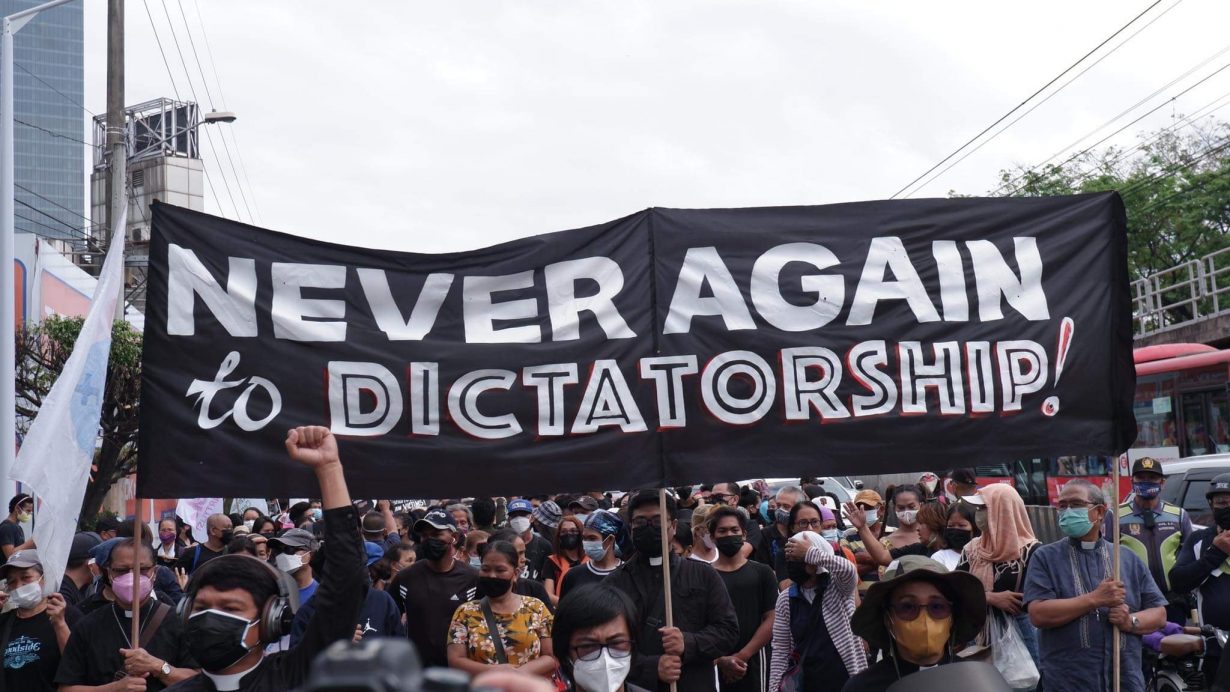
Duterte’s ascent into office in 2016 ruptured the somewhat liberal-democratic era inaugurated in 1986 with the ejection of dictator Ferdinand Emmanuel E. Marcos. Duterte’s vulgar and sexist everyman persona endeared him to many in the Philippines, reflecting growing frustration with class inequalities resulting from the oligarchic families who have retained the majority of political, economic and cultural power. However, his crimes against humanity have garnered widespread criticism: the International Criminal Court is currently investigating the drug war that has claimed the lives of almost 8,000 mostly urban poor people, while his authoritarian regime has killed over 400 peasant activists in the countryside. As the COVID-19 pandemic raged on, he imposed censorship through the 2020 Anti-Terror Law, which has branded dissenters as terrorists and enabled their incarceration. Many have drawn parallels between Duterte and Marcos (whose 21-year tenure, according to Amnesty International, counts over 107,200 killed, tortured or incarcerated victims).
In spite of what many might have celebrated as an end to Duterte’s era, a new nightmare has arisen in the joint bid by children of Marcos and Duterte for the country’s most powerful political seats: Ferdinand ‘Bongbong’ R. Marcos Jr and Sara Z. Duterte have joined forces as running mates for the presidency and vice presidency respectively. (In the Philippines, the president and vice-president run independent of one another but may form such alliances, allowing different political parties to hold the top two seats, as is the present case.) The two have promised to sustain the current president’s legacy.
The publication of Pag-aaral… in 2017 reflects Tariman’s acknowledgement of the country’s sustained history of struggle against Spanish colonialism, American imperialism and the corrupt governments of the twentieth century to today; its unfortunate timelessness is due to historical crisis sustaining, repeating and revising itself. Just a year into Duterte’s presidency, the revolutionary poet likely recognised that the patterns of extreme state and social unrest heralded by the president might initiate widespread revolution. However, while the peaceful EDSA I (1986) and EDSA II (2001) revolutions ejected kleptocrats Marcos and Joseph Estrada (1998–2001), they installed inheritors Cory Aquino (1986–92) and Gloria Macapagal Arroyo (2001–10), who continued to perpetuate the bourgeois, dynastic politics that sustained inequality. The sanctified Cory Aquino, known as the ‘mother of democracy’, was an aristocratic housewife from the wealthy and powerful Cojuangco clan, unqualified to lead but who accepted the responsibility when her husband, Ninoy Aquino – Marcos’s political rival – was assassinated in 1983 (their son Noynoy would serve as president from 2010 to 2016). The Aquinos, despite their opposition to Marcos and sympathy for the Philippine people, were nonetheless part of the wealthy ruling class. Arroyo – daughter of former president Diosdado P. Macapagal Sr (1961–65) and vice president to Estrada – assumed the presidency following Estrada’s impeachment but was later charged with electoral sabotage for her 2004 election victory and plunder (which ally Duterte’s Supreme Court dismissed in 2016).
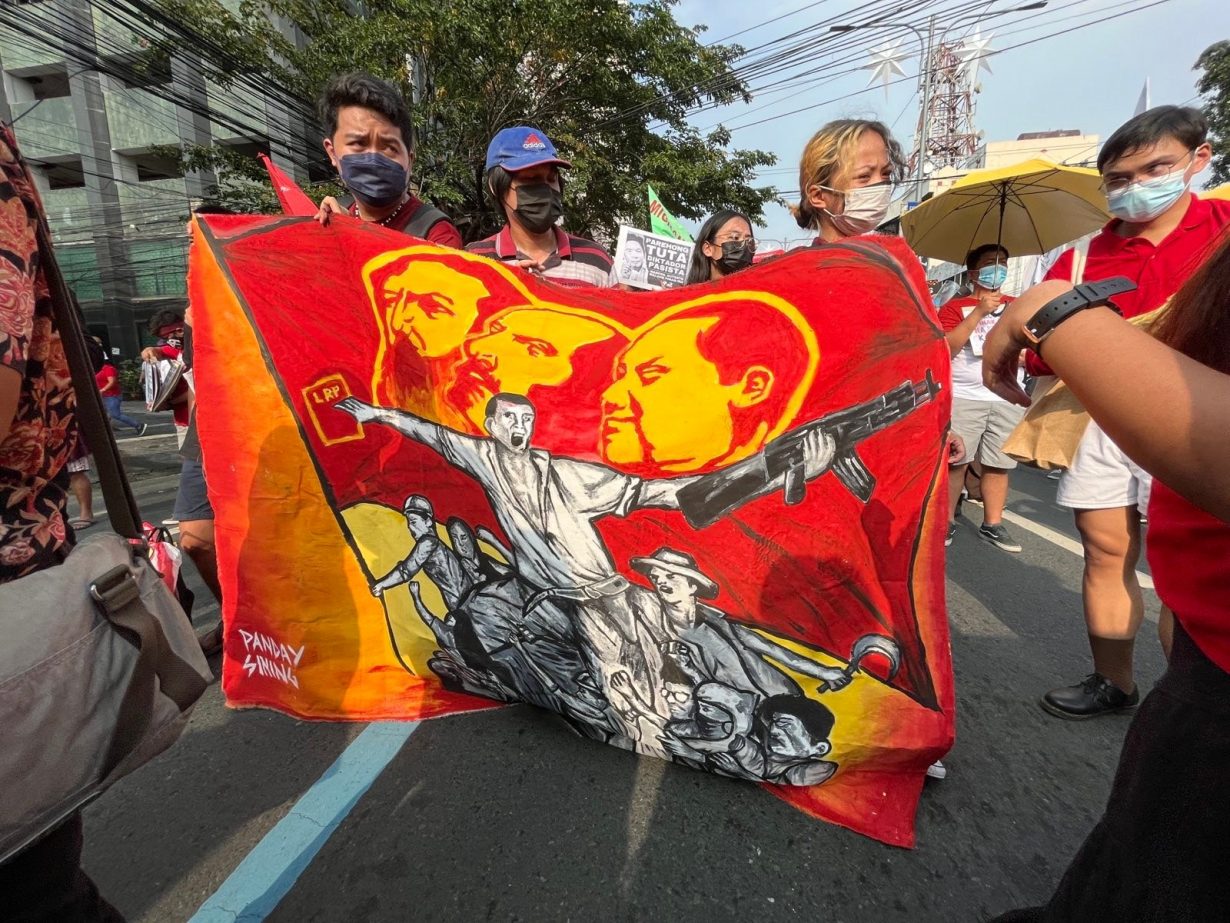
Photo: Sama-samang Artista para sa Kilusang Agraryo
The decades of nepotism demonstrate that these figureheads’ interests have always been in retaining their privileged status. What Tariman believed in and called for was a complete revolution of the proletariat and agrarian workers to initiate a new system led by the masses. The decades of exploitation are reflected in the timelessness of Tariman’s poems. In the collection’s title poem, ‘Pag-Aaral sa Oras’ (Reflections of Time, 2003), she writes:
Pinag-aaralan ko ang oras
Kung paano ito lumilipas
…
Pinag-aaralan ko
Ang segundo at taon
Ang pagkakataon at padron.
…
Matagalang digmang bayan
Ay gaano katagal?
Ito ba’y usapin ng
bilis o bagal?
…
Ang tanong palagi
Ay kailan magwawagi?
I studied time
How it passes
…
I studied
The seconds and years
The opportunities and patterns
…
The protracted people’s war
Is how long?
Is it a matter of how quick
or how slow?
…
The question is always
When will we win?
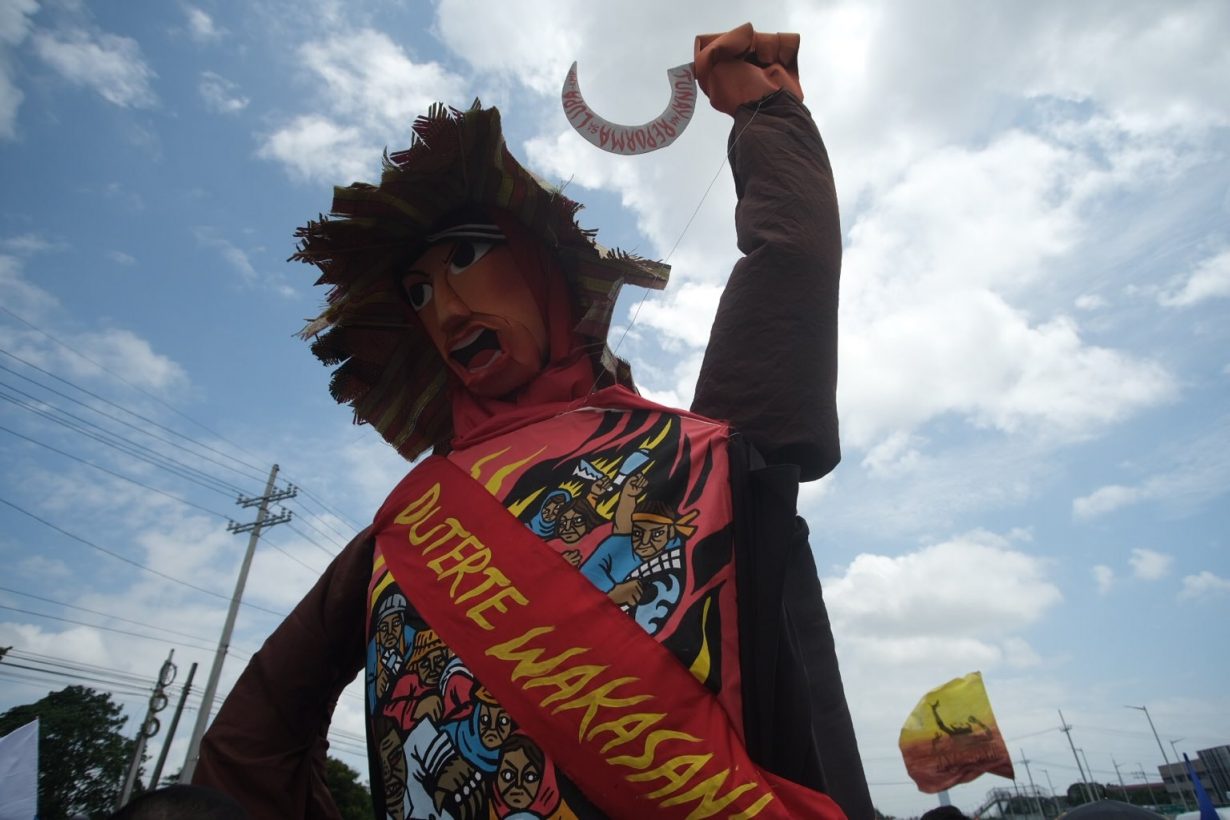
The ‘protracted war’ extends beyond any party, person or changing moment, such as the 2022 presidential elections. Tariman and the NPA have devoted decades to overthrowing the systems they believe have failed the Philippine people. This has made the NPA the longest ongoing communist insurgency in the world. The repetition in ‘Pag-aaral sa Oras’ is not about the singular instances of corruption, rather the prolonged revolution against the continuing systems of oppression; her poetry makes clear it is not a matter of if but when.
The altercation that cost Tariman her life is just one in an ongoing clash between the NPA and the Philippine military. The NPA, founded in 1969, bases its tenets in Marxist-Leninist-Maoist ideology; their founding ‘Basic Rules of the New People’s Army’ read, ‘It is the revolutionary army of the broad masses of the Filipino people against US imperialism, the comprador big bourgeoisie, the landlord class and the bureaucrat capitalists’. The communist army assumes a Maoist approach to agrarian revolution and protracted war to ‘seize and consolidate political power’, since 64 percent of the population during the Marcos era lived in rural areas. In 2020 half still live in the countryside, making guerrilla warfare the preferred method of revolution among Philippine communists, rather than a Leninist-industrial approach. The Philippines, United States and European Union have designated the groups terrorist organisations, but mounting frustration and animosity for Duterte and his government have renewed interest in a communist revolt. For obvious reasons, the size of the CPP and NPA’s memberships are unknown, but their growing numbers have forced the president – a former member of the CPP’s youth organisation Kabataang Makabayan (Nationalist Youth) – to initiate peace talks, though these have recently been called off. In a 2021 government address focused on countering communism, Duterte said: ‘I’ve told the military and the police that if they find themselves in an armed encounter with the communist rebels, kill them’.
Through poetry, Tariman demonstrated the ideological reasons for joining the resistance movement. She writes explicitly of Karl Marx in ‘Aralin sa Ekonomyang Pampulitika’ (A Lesson in Political Economy, 2001), excerpted here:
Nang matuklasan ng isang
Aleman
Ang labis na halag
Ay nakalkula na rin
Ang lahat-lahat na.
Halaga ng tao
Halaga ng lupa
Halaga ng tula
Halaga ng digma
Kung sa loob pa lamang
Ng tatlong minutong trabaho
Ay nalikha na ng
manggagawa
Ang buong araw niyang sweldo,
Ang tantos ng pagsasamantala
Ay ilang porsyento?
Ay, ang labis na halaga –
O pagpapahalaga –
Sa superganansya’t supertubo!
…
Bakit ba napakahalaga
Ng paghahangad ng labis?
Kung ang labis-labis,
Ang katumbas ay krisis
When a German
discovered
The surplus value
He also calculated
Everything.
The value of people
The value of land
The value of poems
The value of war
If within
Three minutes of work
The worker has already
produced their
wage for the day
The rate of abuse
Is what percent?
The cost is high –
Or excessive –
Of the superprofit!
…
Why is it so important
To want excessively?
If this excessiveness,
Results in crisis?

Tariman introduces Marx’s concept of surplus value by highlighting the discrepancy between labour and wages to the reader and raising the question: if the worker makes their entire earnings within the first three minutes of work, where does the rest of it go? She explains that with this notion Marx inadvertently also identified the value of material, or the exploitation and reduced worth of the people, land, poems and war that form the product in the pursuit of profit. Within the next lines, the repetition of ‘value’ further enforces the mutually diminished worth of the means of production relative to the capital itself; however, the line ‘the value of war’ is open-ended: does it refer to the wars that resulted in colonial and imperial subjugation by first Spain and then America? Or does it refer to the guerrilla war waged by the rebels, fighting to augment their value? The following stanza contextualises the peasants’ labour, that any work beyond the three minutes is the surplus value belonging to the ruling classes. Tariman lastly questions whether this greed is worth the exploitation of the masses.
For decades, Tariman lived in the rural areas of the country, immersing herself in the plight of those who constitute the majority of the population. In 2000, after an incomplete stint at the University of the Philippines, Diliman, where she pursued Philippine Studies and was the managing editor of the campus paper Philippine Collegian, the poet was arrested in Ilagan, Isabela, for alleged illegal possession of firearms. At the time, Tariman was undergoing an education programme with the NPA in Cagayan, where she hoped to understand the peasant struggle better. Her arrest and detention were ‘an indispensable lesson on the reality of class struggle’, she said of the experience in a 2012 interview with Sarah Raymundo. The same year of her arrest, Tariman penned the following passage of ‘Malapyudalismo’ (Semifeudalism):
MALAPYUDALISMO.
pinagdikit-dikit na titik
na sumusuyod sa ulo
ito’y palaisipang
kaydaling matanto:
tumatanghod sa taltalon
tulad ng multong tuliro,
gumagapang sa mga gapas
at sa nabaling araro.
pinagdikit-dikit na titik,
na kurok sa sikmura
sa tuwing sasapit ang apit.
masakit na likod
kagat ng lamok
iyak ng bata
maganit na tuhod
murang sigarilyo
mahal na abono
inutang na kwarta
takot sa panginoon –
sumada ito ng sanlakasang
talinghaga
sa salaysay ng Mannalon
sa Pulang mandirigma.
SEMIFEUDALISM.
letters glued together
that squeeze your head
this is a puzzle
that’s easy to figure out:
looking at the farms
like a confused ghost,
creeping towards the cotton
and the broken plough.
letters glued together,
that make my stomach growl
whenever the harvest comes.
painful back
mosquito bite
crying child
tough knees
cheap cigarettes
expensive fertilizer
borrowed money
fear of god –
all these result in
a powerful parable
the story of the Peasants
of the Red warrior.
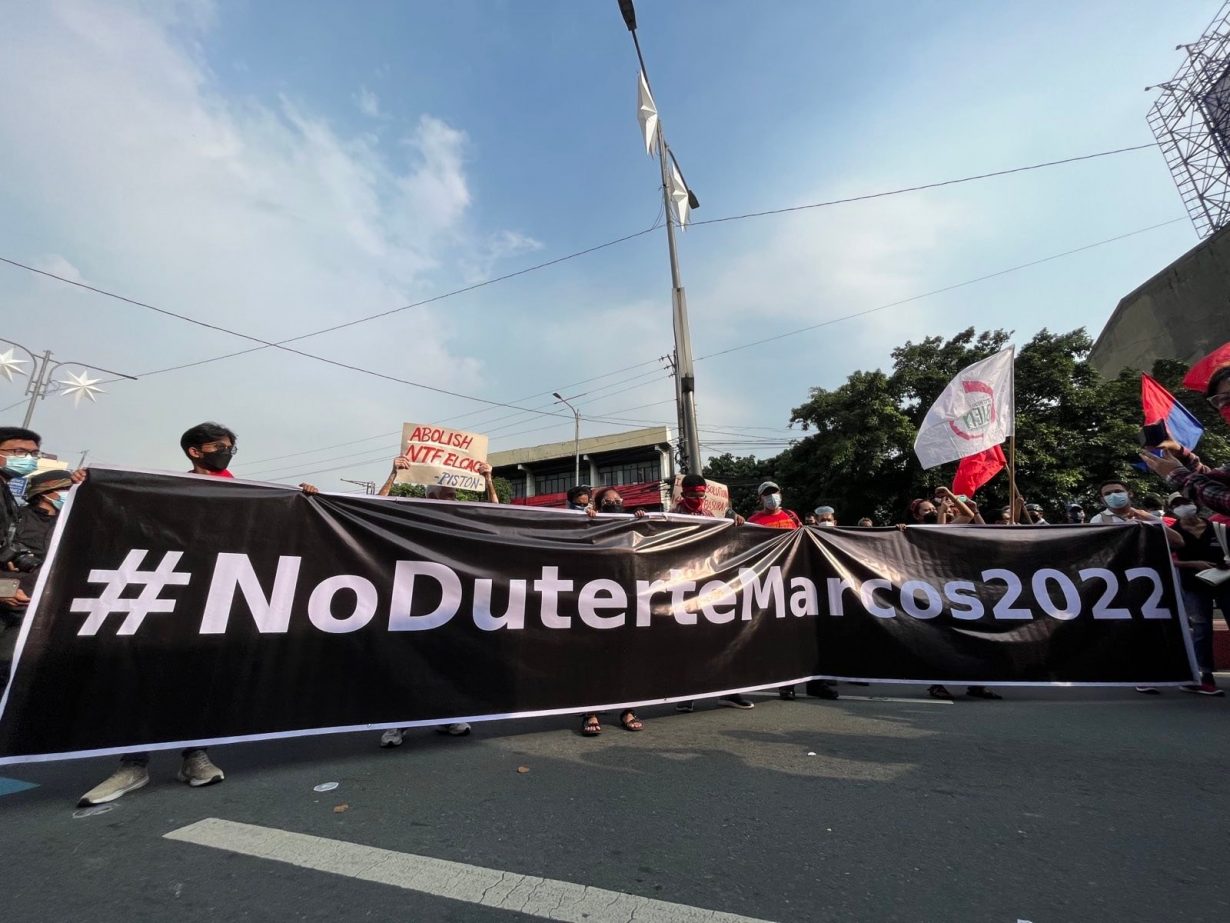
Photo: Sama-samang Artista para sa Kilusang Agraryo
Tariman’s blunt poetry refuses to hide behind metaphors, relying instead on reality’s details to express the circumstances of the agrarian population. This narrative device is used in witness literature to archive the historical testimonies of these largely obscured accounts. In ‘Malapyudalismo’ the poet narrates the thoughts preoccupying the peasantry as they go about their daily lives – like the sensory marks of mosquito bites or bodily pains – alongside the omnipresent dread of debt. Tariman explains how the mounting minutiae culminate in the conditions for revolution – ‘the story of the Peasants / the Red warrior’. In the 2012 interview Tariman speaks of the honesty about one’s political commitments in art, saying that ‘when one creates art without being apologetic about its political implications, one is actually being quite ethical’.
As a communist leader, Tariman practised her ideology and perished defending her commitment to overthrowing imperialism, feudalism, capitalism and the bourgeoisie – systems the poet claims have created the conditions for the Philippine class struggle. In a trigger-happy country that defines dissenters as terrorist, to associate with communism is to risk red-tagging; even in this writing, I’ve omitted other sympathetic artists’ names for their safety. Admittedly, political theories of Marxism-Leninism-Maoism resonate with the liberal left and have done since the Marcos era; but this lethal administration has failed to demonstrate any boundaries in its attacks. With another potentially treacherous regime on the horizon, safety may take precedence over defiance of censorship. However, even those who don’t claim to be communists can learn something from Tariman’s relentless pursuit for equality – to look beyond the immediate presidential elections and question the long-term system as it stands. In her absence, her legacy endures in the empathetic and sincere literature she leaves behind. Tariman has encouraging words for comrades in a more recent poem, ‘Hukbo ng Maralita’ (Army of the Poor, 2017):
Paano nga ba kasama
Ang pabayaan ang nakaraan?
Kalimutan ang ginhawa
At pagkamakasarili,
Panghawakan ang kalagayan
Na kinakaharap,
Upang mapagtibay
Ang prinsipyadong pagsasamahan?
Umbante nang walang
pag-aalinlangan,
Daakil kahit kung minsan,
Naririyan ang kabiguan,
Sa atin naman ang tagumpay
Sa huling paglalaban.
How, comrade
Do we let go of the past?
Forget the peace
And one’s self,
Hold on to the promise
Of the future,
To strengthen
Our shared principles?
Move forward without
hesitation,
Because sometimes,
Failure is there,
Victory is ours,
At the last fight.
From the Spring 2022 issue of ArtReview Asia
